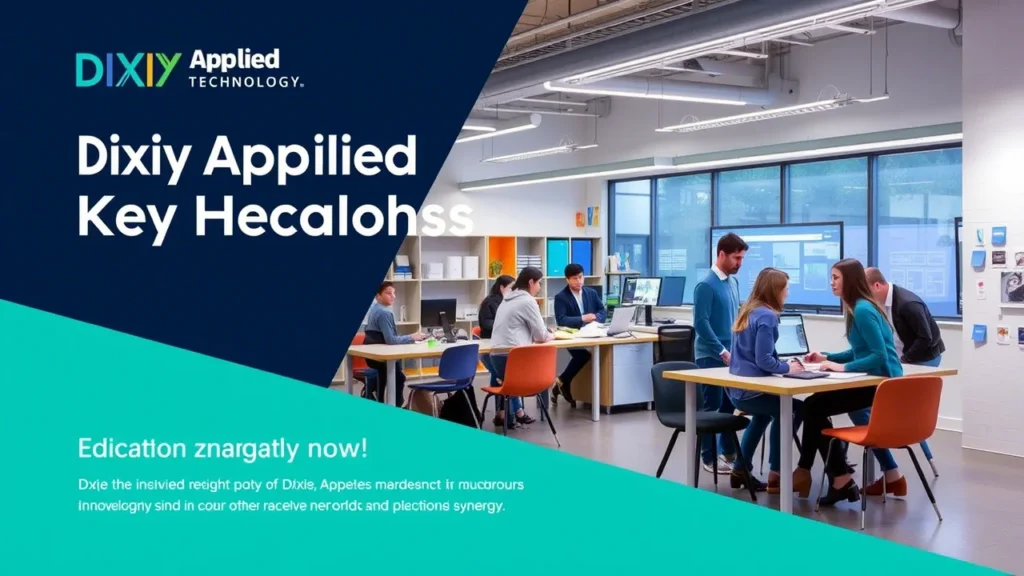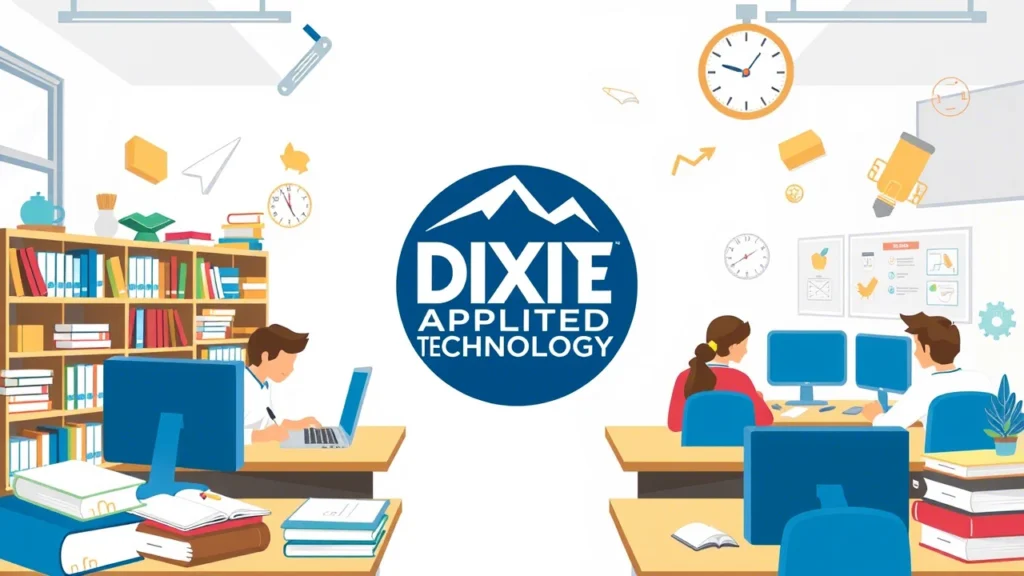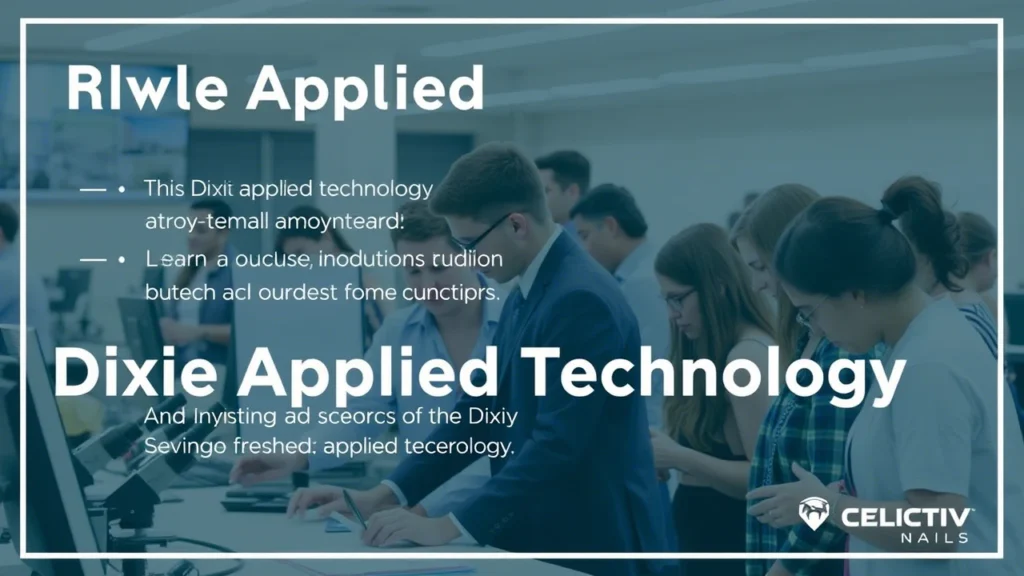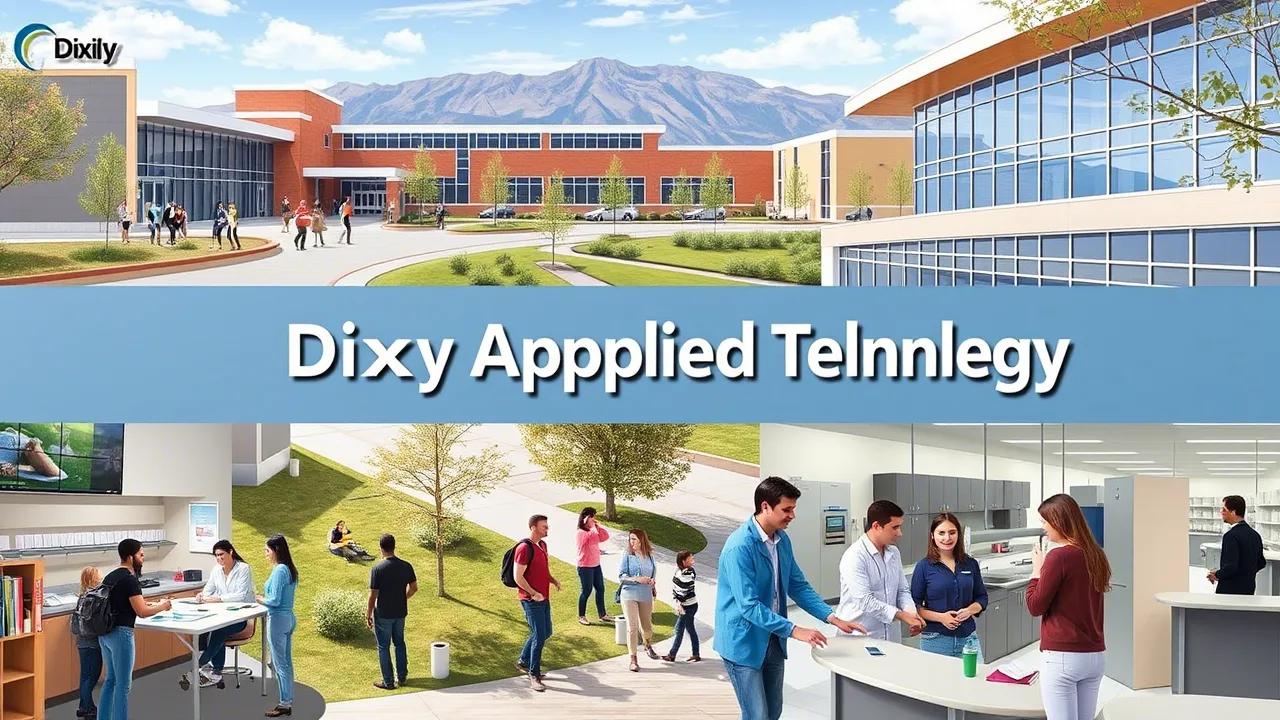Dixie Applied Technology has emerged as a game-changer, offering innovative solutions that enhance efficiency, productivity, and sustainability. Whether you’re a business owner, an educator, or simply someone intrigued by technological progress, understanding Dixie Applied Technology can open doors to new opportunities. This comprehensive guide will delve into what Dixie Applied Technology is, its significance, real-world applications, and how it stands out in a competitive market.
Dixie Applied Technology refers to a specialized field of applied sciences that focuses on practical applications of technological advancements. Unlike theoretical technologies, which often remain confined to research papers, Dixie Applied Technology emphasizes solving real-world problems through hands-on implementation. The term “Dixie” itself reflects a regional identity, but the scope of this technology extends far beyond geographical boundaries. It encompasses tools, systems, and methodologies designed to address challenges in diverse sectors such as healthcare, manufacturing, education, and environmental conservation.
One of the key reasons Dixie Applied Technology has gained traction is its adaptability. It doesn’t follow a one-size-fits-all approach; instead, it tailors solutions to meet specific needs. For instance, in agriculture, Dixie Applied Technology might involve precision farming techniques powered by IoT devices to monitor crop health. In contrast, in the healthcare sector, it could mean leveraging AI-driven diagnostic tools to improve patient outcomes. This versatility makes Dixie Applied Technology a versatile and indispensable asset in modern problem-solving.
The Importance of Dixie Applied Technology
The importance of Dixie Applied Technology cannot be overstated. First and foremost, it bridges the gap between innovation and application. Many groundbreaking ideas fail to make an impact because they lack practical implementation. Dixie Applied Technology ensures that promising concepts are translated into tangible results. By focusing on usability and scalability, it empowers organizations to achieve their goals more effectively.
Consider the example of renewable energy. While solar panels and wind turbines have existed for decades, Dixie Applied Technology takes these innovations further by optimizing their performance. Advanced algorithms analyze weather patterns to maximize energy output, while smart grids ensure efficient distribution. These enhancements not only reduce costs but also contribute to global sustainability efforts. As a result, Dixie Applied Technology becomes a cornerstone of green initiatives worldwide.
Moreover, Dixie Applied Technology fosters economic growth. By streamlining processes and reducing waste, businesses can operate more efficiently, leading to increased profitability. For instance, manufacturers adopting robotic automation—a hallmark of Dixie Applied Technology—can produce goods faster and with fewer errors. This not only boosts revenue but also creates jobs in tech-related fields. Furthermore, educational institutions incorporating Dixie Applied Technology into their curriculum prepare students for careers in high-demand industries, ensuring a steady pipeline of skilled professionals.

Real-World Applications of Dixie Applied Technology
To truly appreciate the value of Dixie Applied Technology, let’s explore some of its most impactful applications across various sectors. Each example highlights how this technology addresses unique challenges and delivers measurable benefits.
Healthcare
In the healthcare industry, Dixie Applied Technology has revolutionized patient care. Telemedicine platforms, powered by advanced data analytics, enable doctors to diagnose and treat patients remotely. Wearable devices equipped with sensors monitor vital signs in real time, alerting medical staff to potential issues before they escalate. Additionally, machine learning algorithms assist radiologists in detecting abnormalities in X-rays and MRIs, improving accuracy and speed.
Education
Educational institutions have embraced Dixie Applied Technology to create immersive learning experiences. Virtual reality (VR) simulations allow students to explore historical landmarks or conduct virtual science experiments. Adaptive learning software personalizes lessons based on individual strengths and weaknesses, ensuring no student gets left behind. Moreover, online collaboration tools facilitate communication between teachers and students, breaking down geographical barriers.
Manufacturing
Manufacturing plants utilizing Dixie Applied Technology benefit from automation and predictive maintenance. Robots handle repetitive tasks with precision, freeing human workers to focus on more complex activities. Predictive analytics identify equipment failures before they occur, minimizing downtime and repair costs. Together, these innovations enhance productivity while maintaining safety standards.
Environmental Conservation
Environmentalists rely on Dixie Applied Technology to combat climate change and preserve natural resources. Drones equipped with cameras survey deforested areas, helping reforestation efforts. Water purification systems powered by nanotechnology provide clean drinking water to underserved communities. Smart irrigation systems conserve water by delivering precise amounts to crops, reducing wastage.

How Dixie Applied Technology Stands Out
What sets Dixie Applied Technology apart from other technological frameworks? Several factors contribute to its uniqueness and effectiveness. First, its emphasis on customization ensures that solutions align perfectly with user requirements. Unlike generic technologies that may require significant modifications to work in different contexts, Dixie Applied Technology adapts seamlessly.
Second, collaboration lies at the heart of Dixie Applied Technology. It brings together experts from multiple disciplines—engineers, scientists, designers, and policymakers—to co-create solutions. This multidisciplinary approach fosters creativity and innovation, resulting in holistic outcomes that address both technical and social aspects of a problem.
Third, Dixie Applied Technology prioritizes accessibility. Affordability and ease of use are central tenets, making it accessible even to small businesses and developing regions. Open-source platforms and community-driven projects further democratize access, empowering individuals and organizations to harness its potential without prohibitive costs.
Finally, Dixie Applied Technology places a strong emphasis on ethics and sustainability. Developers adhere to strict guidelines to ensure their creations do not harm people or the planet. From eco-friendly materials to transparent data practices, every aspect of Dixie Applied Technology reflects a commitment to responsible innovation.
Challenges Facing Dixie Applied Technology
Despite its numerous advantages, Dixie Applied Technology faces several challenges that must be addressed to unlock its full potential. One major hurdle is resistance to change. Many organizations hesitate to adopt new technologies due to fear of disruption or lack of understanding. Overcoming this requires robust training programs and clear demonstrations of ROI.
Another challenge is cybersecurity. As Dixie Applied Technology relies heavily on interconnected systems, it becomes vulnerable to cyberattacks. Ensuring robust encryption protocols and regular updates is crucial to safeguard sensitive information. Collaborations with cybersecurity experts can help mitigate risks and build trust among users.
Lastly, funding remains a barrier for widespread adoption. Developing and implementing cutting-edge technologies often requires substantial investment. Governments and private investors need to recognize the long-term benefits of supporting Dixie Applied Technology initiatives to encourage greater participation.

Prospects of Dixie Applied Technology
Looking ahead, the future of Dixie Applied Technology appears bright. Emerging trends suggest continued growth and expansion into untapped markets. Artificial intelligence, blockchain, and quantum computing are expected to play integral roles in advancing its capabilities. For example, AI-powered robots could perform complex surgeries with unparalleled precision, while blockchain ensures secure transactions in supply chain management.
Furthermore, partnerships between academia, industry, and government will drive innovation forward. Joint ventures focused on research and development will lead to breakthroughs that address pressing global issues like food security, urbanization, and pandemics. International collaborations will also facilitate knowledge sharing and standardization, creating a unified framework for Dixie Applied Technology adoption.
As awareness grows, so too will public support. Citizens recognizing the positive impact of Dixie Applied Technology on their daily lives will advocate for policies that promote its integration. Grassroots movements championing digital literacy and STEM education will cultivate a generation equipped to leverage this technology responsibly.

Conclusion
Dixie Applied Technology represents a beacon of hope in an increasingly complex world. Its ability to solve real-world problems through practical applications makes it invaluable across industries. From healthcare to education, manufacturing to environmental conservation, its influence continues to grow, driving progress and prosperity. However, realizing its full potential requires overcoming challenges related to adoption, security, and funding.
By fostering collaboration, prioritizing ethics, and embracing innovation, we can ensure that Dixie Applied Technology fulfills its promise. As stakeholders—from policymakers to end-users—come together to champion this cause, we pave the way for a brighter, more sustainable future. Whether you’re directly involved in implementing Dixie Applied Technology or simply curious about its possibilities, now is the time to engage and contribute to this transformative movement. After all, the journey toward technological excellence begins with a single step.
